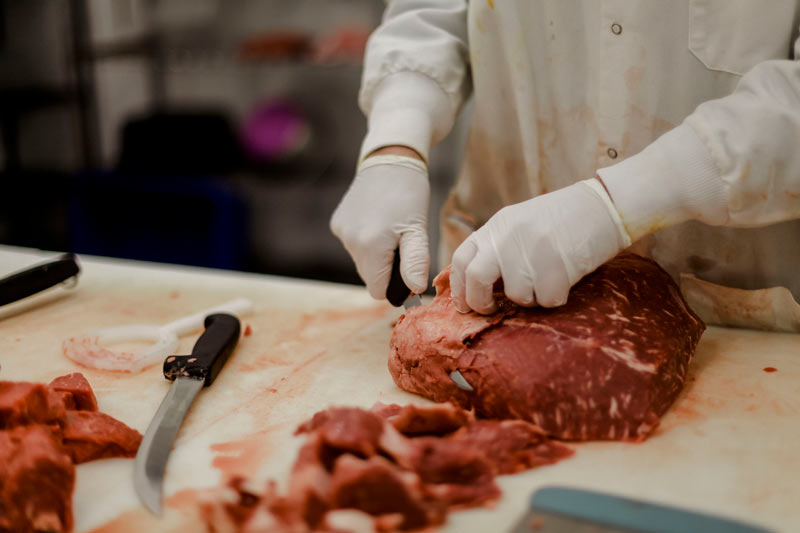Choose fresh meats and specialty items at Bagley Meat Market Edwardsville IL.
Choose fresh meats and specialty items at Bagley Meat Market Edwardsville IL.
Blog Article
Exactly How to Pick the Perfect Cut of Meat From a Trusted Meat Market
Choosing the optimal cut of meat from a trusted meat market calls for a thoughtful approach that balances high quality, cooking purpose, and spending plan. Comprehending the various types of meat and their corresponding cuts is vital, as is engaging with your butcher to get understandings right into sourcing and prep work.
Recognizing Meat Cuts


As an example, the tenderloin is valued for its buttery appearance and minimal connective tissue, making it perfect for fast food preparation approaches such as grilling or pan-searing. In contrast, tougher cuts like the brisket or shank take advantage of sluggish cooking methods to break down collagen, producing abundant and savory outcomes.
In addition, the fat content of a cut plays a vital function in flavor profile and wetness retention throughout food preparation. Cuts with higher fat content, such as ribeye, offer a more durable flavor, while leaner alternatives, like sirloin, might call for mindful prep work to prevent dry skin (bagley meat market edwardsville il). Comprehending these nuances enables for educated options that raise cooking creations, making sure that each recipe showcases the most effective top qualities of the picked meat
Aspects to Consider
When picking the ideal cut of meat, a number of important variables enter into play that can significantly impact the last dish. Primarily, think about the sort of meat you prefer-- beef, pork, lamb, or chicken-- as each offers distinct tastes and appearances. The certain cut within that category is equally important; as an example, ribeye provides abundant marbling, while tenderloin offers a lean, buttery structure.
One more aspect is the food preparation approach you intend to utilize. Cuts appropriate for barbecuing, such as T-bones or sirloins, differ from those better matched for slow food preparation, like chuck roasts or shanks. In addition, freshness is vital; always pick meat with a vivid color and firm texture, signaling top quality and appropriate handling.
In addition, consider the resource of the meat. A relied on meat market commonly offers in your area sourced, hormone-free, and grass-fed options, which can enhance flavor and nutritional value. Your budget will lead your selection. Costs cuts may offer remarkable preference, yet there are additionally cost-efficient options that, when prepared properly, can generate scrumptious outcomes. Stabilizing these variables will assist you choose the best cut for your cooking needs.
Questions to Ask Your Butcher
A butcher's expertise can be very useful when picking the perfect cut of meat for your cooking undertakings. Begin by asking about the resource of the meat.
Following, inquire about the various cuts readily available for the kind of meat you like. A well-informed butcher will discuss read the subtleties of each cut, aiding you select one that matches your cooking approach and desired result. Do not wait to inquire about the finest food preparation techniques for a specific cut; butchers often have suggestions that can enhance your recipe.
It's also prudent to ask regarding the meat's quality. A great butcher will certainly be eager to share their competence and suggest cuts that will certainly delight your taste. Involving your butcher with these concerns can significantly enhance your meat choice experience.
Acknowledging Top Quality Meat

Structure is another crucial variable; quality meat ought to feel redirected here strong and slightly springy to the touch. Stay clear of any kind of cuts that really feel slimed or excessively completely dry, as these can suggest perishing or inappropriate storage. Additionally, odor plays a crucial function; fresh meat needs to have a clean, neutral fragrance, while any type of off-putting or sour smells are red flags.
Last but not least, take into consideration the resource. Getting from a credible meat market, where the meat's beginning is known, can make sure greater top quality requirements. By concentrating on these indicators-- color, marbling, structure, smell, and source-- you can confidently Continue select cuts that will raise your food preparation and eating experience.
Food Preparation Techniques for every Cut
Selecting the right cooking technique is critical for making the most of the taste and tenderness of each cut of meat. Various cuts possess special characteristics that determine one of the most appropriate cooking techniques.
For tender cuts, such as filet mignon or ribeye, completely dry warm approaches like cooking, broiling, or pan-searing are excellent. On the other hand, tougher cuts, such as chuck or brisket, advantage from damp warmth approaches, including braising or sluggish cooking.
Pork chops and chicken busts are versatile and can be prepared utilizing both completely dry and moist techniques. While barbecuing or roasting can generate scrumptious results, poaching or sautéing can preserve wetness and inflammation. For lamb, methods like toasting or braising are advised, as they enhance the meat's robust taste.

Final Thought
Finally, choosing the excellent cut of meat from a trustworthy meat market necessitates an extensive understanding of meat cuts and consideration of numerous aspects, including resource, quality, and food preparation approaches. Involving with the butcher through targeted questions can generate valuable insights and recommendations customized to particular culinary needs. Focusing on both top quality and spending plan will certainly improve the overall gastronomic experience, guaranteeing that the selected cut satisfies assumptions in both flavor and preparation.
Report this page